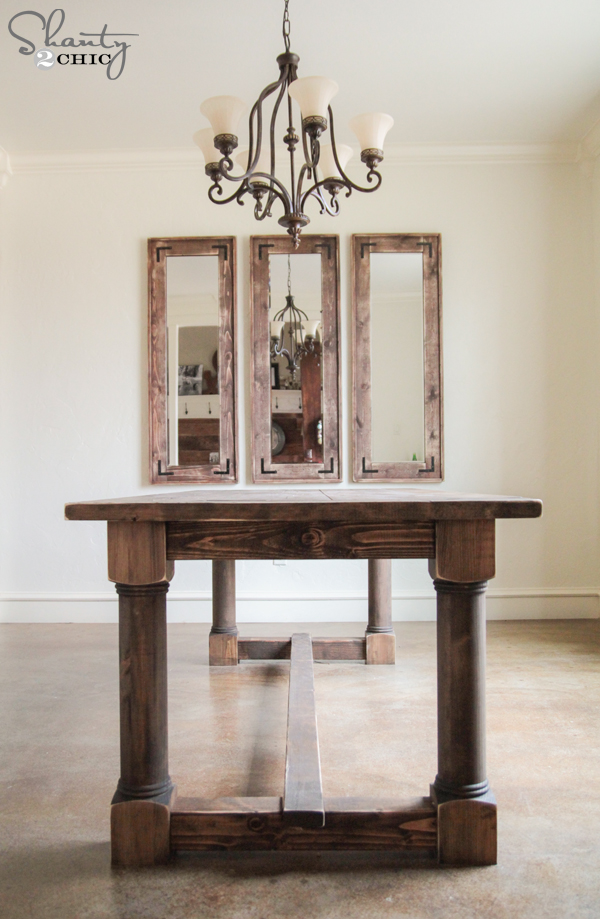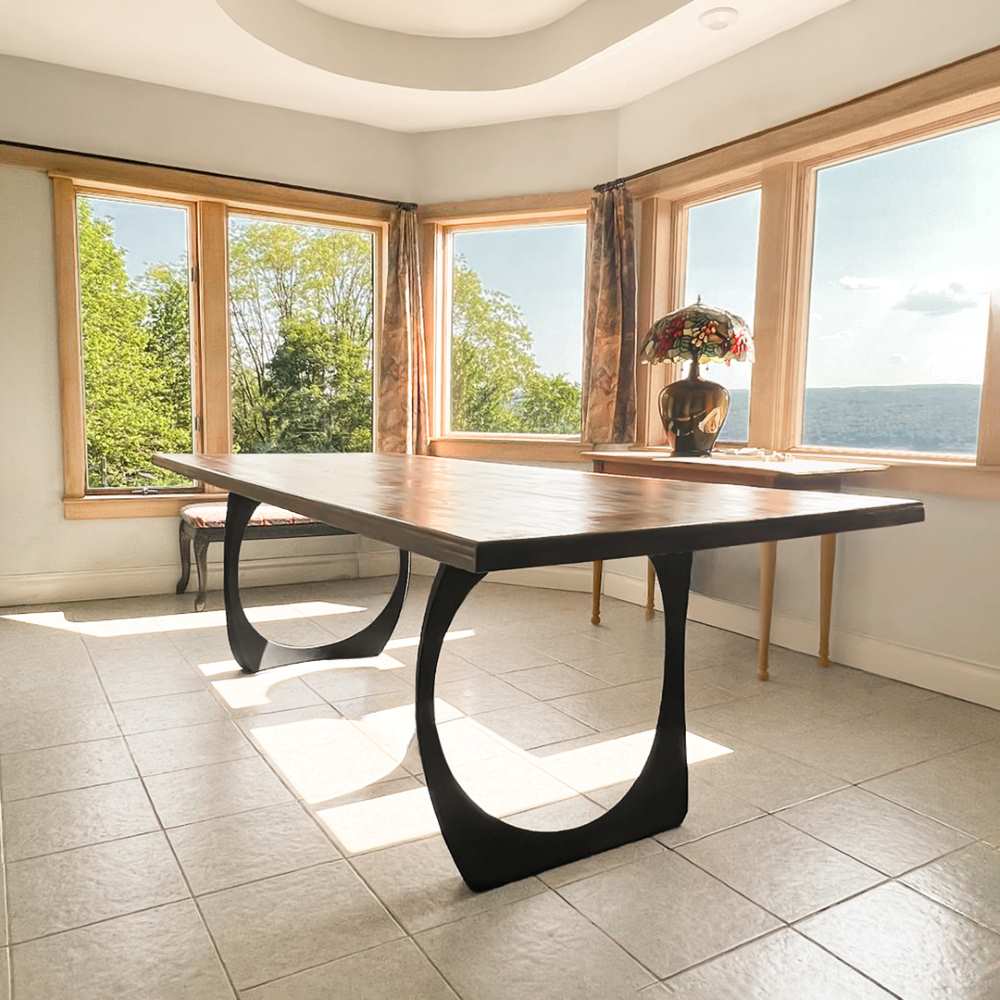From Typical to Modern: Discover the Perfect Dining-room Table Legs for Your Style
While timeless designs such as cabriole and turned legs evoke a sense of ageless sophistication, modern designs like barrette and geometric options present an opportunity for striking aesthetic rate of interest. As you take into consideration these elements, the inquiry continues to be: how can you flawlessly incorporate these varied leg styles to create an unified eating experience?
Recognizing Table Leg Styles
The range of dining-room table leg designs can considerably influence both the aesthetics and capability of the area. Each leg design contributes unique useful functions and aesthetic components, accommodating varied style choices and use requirements. Understanding these designs is important for selecting the appropriate table that lines up with your total interior layout vision.
As an example, tapered legs provide a tidy, traditional appearance that can improve a space's sophistication, while pedestal bases supply stability and take full advantage of legroom, making them optimal for smaller spaces. Hairpin legs, a trademark of mid-century modern design, present an industrial style, permitting an airy, open feeling. In a similar way, trestle legs evoke rustic charm, providing robust support and a feeling of timelessness.
Wood legs can bring heat and appearance, whereas metal alternatives typically share a smooth, contemporary ambiance. Eventually, recognizing table leg designs is necessary for developing a natural dining area that shows personal design while making certain functionality and convenience.
Typical Table Leg Options
When selecting eating room table legs, typical choices frequently personify ageless sophistication and craftsmanship. These styles reflect a rich heritage and a commitment to top quality, making them perfect for those who value traditional aesthetics.
One of one of the most legendary standard leg designs is the cabriole leg, identified by its stylish bent shape. This layout commonly features attractive makings and is most generally discovered in Queen Anne and Chippendale furniture. One more prominent option is the transformed leg, which flaunts a series of smooth, rounded shapes that give a timeless appearance while maintaining stability.
Additionally, the straight leg, while easy, supplies a sturdy and basic framework that can blend perfectly with a selection of tabletop styles. For those attracted to ornate outlining, claw-and-ball feet legs stimulate a sense of magnificence and can offer as a magnificent prime focus in any dining area.
Finally, pedestal bases, although not purely legs, supply an alternate typical choice that enables for sufficient legroom and can be beautifully sculpted. Each of these traditional leg designs adds to the general setting of a dining area, marrying feature with visual allure.

Modern Table Leg Layouts
Modern table leg designs provide a diverse series of styles that stress ingenious materials and tidy lines. These styles commonly focus on functionality while serving as striking centerpieces within a dining room. Minimal looks prevail, with legs crafted from products such as steel, glass, and crafted timber, which add to a airy and modern feel.
One preferred layout is the hairpin leg, characterized by its slender, conical structure that provides security without frustrating the table top (dining room table legs). This style is frequently discovered in mid-century contemporary furniture and can easily match different table shapes. Another trend is using geometric forms, where legs might handle angular or unbalanced kinds, adding visual rate of interest and a touch of creativity

Blending Designs for Special Spaces
Usually, homeowners look for to develop unique eating areas that reflect their personal design by mixing various layout components. This technique enables the unification of varied aesthetic appeals, causing a harmonious yet distinctive environment. Matching a rustic wooden table with smooth, contemporary steel legs can produce an eye-catching contrast that raises the area's total appeal.
Furthermore, incorporating vintage table legs with contemporary tabletops can stimulate a sense of history while keeping a modern sensibility. Such combinations not only display individual preference yet also motivate creativity, permitting homeowners to curate a room that really feels both personal and welcoming.
Color plays a crucial duty in this Check Out Your URL mixing procedure; selecting table legs that enhance or contrast with the existing color design can enhance visual interest. For instance, whitewashed legs can soften the daring of a dark table surface, producing a balanced aesthetic.
Tips for Picking the Right Legs
Choosing the right table legs is important for attaining both performance and visual charm in your dining area. Begin by considering the general design of your space. Traditional setups take advantage of legs that feature complex carvings or transformed designs, while modern areas might call for sleek, minimalist designs.
Next, analyze the elevation and security of the legs. dining room table legs. Common dining tables vary in between 28 to 30 inches in height, so make certain the legs enhance this dimension for comfort. In addition, robust materials, such as hardwood or steel, can enhance stability and long life
Assess the leg shape too-- choices include directly, tapered, or pedestal designs. Straight legs provide a classic look, while tapered legs can add a touch of beauty. Pedestal bases give adequate legroom and are suitable for smaller areas.
Final Thought
In recap, useful link picking the pop over to this site perfect dining-room table legs needs cautious consideration of both contemporary and standard designs. Traditional choices such as cabriole and turned legs supply ageless elegance, while modern styles like hairpin and geometric forms provide a modern touch. By balancing leg style, elevation, and product with the general decoration, a cohesive and inviting atmosphere can be attained. Eventually, the chosen table legs ought to mirror the preferred visual, boosting the dining experience within the room.
The selection of dining area table leg styles can considerably influence both the aesthetic appeals and functionality of the space. Inevitably, understanding table leg styles is vital for producing a natural eating location that reflects personal style while making sure practicality and convenience.One of the most iconic conventional leg styles is the cabriole leg, identified by its stylish bent shape. Straight legs provide a timeless look, while tapered legs can include a touch of sophistication.In recap, selecting the excellent dining room table legs requires mindful consideration of both standard and modern designs.